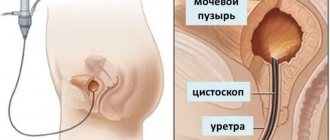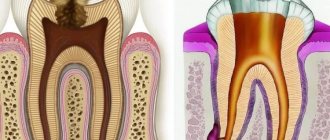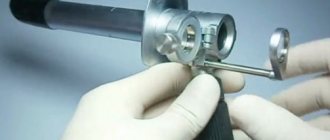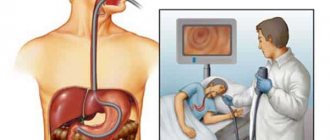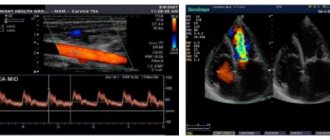A woman's menstrual cycle consists of two phases, separated by ovulation. For successful conception, the full development of the egg is necessary, with its obligatory entry into the fallopian tube after leaving the ovary to meet the sperm. In the first period, liquid bubbles are formed, in which this source of future small life develops, and then folliculogenesis begins, which lasts until ovulation occurs.
What is folliculogenesis
Folliculogenesis is the process of follicle maturation, which results in ovulation. It occurs in several stages, each of which is accompanied by certain symptoms. The growth of follicles is carried out under the influence of hormones produced by the pituitary gland and adrenal glands. The following stages of folliculogenesis are distinguished:
- The primordial or zero stage is typical for girls in the womb. During this period, there are about 2 million potential eggs. After birth, the number of follicles decreases markedly.
- The preantral stage is characteristic of puberty. Against the background of apoptosis, the number of follicles decreases to 300,000. The structure of the follicles also changes. The core gradually enlarges and liquid forms around it.
- The antral stage is typical for women of childbearing age. It occurs in the follicular phase of the cycle. Due to the increased production of estrogen, active growth of follicles begins.
- The preovulatory stage is recorded immediately before the rupture of the follicle. It reaches a size of more than 18 mm. An egg-bearing tubercle is visualized on one side. Such a follicle is called mature.
Processes of folliculogenesis and ovulation
Follicles in the ovaries: stages of development, norms and abnormalities
Goals of folliculometry
At the AltraVita reproductive health center, medical specialists widely use folliculometry, which is monitoring the process of maturation and growth of follicles.
It pursues several goals, which include:
- Assessment of the functional state of the ovaries.
- Confirmation or exclusion of ovulation (the process of the release of a mature egg from the follicle).
- Determining the day of the menstrual cycle in accordance with ovulation.
- Determination of the dominant follicle that begins to produce the hormone estradiol.
- Finding out the optimal day for conception.
- Determining the optimal period of time to perform such a manipulation as follicle puncture, which is a puncture with a special thin needle to collect an egg (usually carried out as part of IVF or to obtain donor oocytes).
- Diagnosis of various pathological processes of the female reproductive system that affect the functional state of the ovaries and the process of folliculogenesis.
On what day of the cycle should folliculogenesis be done?
Folliculogenesis must be monitored if pathologies of reproductive function are suspected. Prerequisites for this include irregular menstruation and lack of pregnancy during unprotected sexual intercourse. But it must be remembered that even a healthy woman may not ovulate in 1-2 cycles per year.
With a standard 28-day cycle, visits begin on days 11-12 of the cycle. If the cycle is irregular, study days are prescribed on an individual basis. To find out the approximate day of ovulation, you need to subtract 14 from the average cycle length. The first visit to the ultrasound room is carried out 3-4 days before the expected ovulation. If a woman’s cycle lasts 40 days, then ultrasound examination of folliculogenesis begins on days 22-23 of the cycle.
Read more about ultrasound during ovulation.
Results of the procedure
If monitoring shows that a woman is ovulating normally, but pregnancy still does not occur, then the cause may be tubal obstruction or a uterine defect. During the ultrasound procedure, the doctor may see several enlarged follicles during normal ovulation, which disappear during the next examination. This indicates that the egg has entered the fallopian tubes, and a corpus luteum is formed in place of the burst follicle. A blood test at this time will show an increase in the hormone progesterone, which will indicate the active formation of the corpus luteum. What is it and why is its formation necessary for the female body? The corpus luteum is a temporary gland, which produces additional progesterone necessary for a harmonious pregnancy.
But if a woman has problems with ovulation, the doctor must determine the cause. The first of them is atresia. In this case, the follicle develops incorrectly. At first it reaches large sizes, and then begins to decrease. Thus, the ovulatory process is disrupted, and the cycle is called anovulatory. An ultrasound examination in this case may show that the size of the dominant follicle decreases and the corpus luteum does not form. The level of progesterone in the blood remains at the same level. It is important to note that atresia, or anuvolatory cycle, can occur in a woman’s body once or occur from month to month.
The second reason is a persistent follicle. In this case, it increases in size, but does not burst at the right time. As a result, the egg does not release into the tubes, and ovulation does not occur, and the corpus luteum does not form. A blood test will show a decrease in progesterone levels and an increase in estrogen.
The third reason is luteinization of the follicle. In this case, it will increase in size and rupture, but the corpus luteum will not form behind the uterus, but in its place. An ultrasound procedure may show rupture and even the formation of a corpus luteum, but the fluid that forms during the normal ovulatory process behind the uterus will not be noticeable. Since the corpus luteum will form, a blood test will show an increase in progesterone.
The fourth reason why normal ovulation may not occur in a woman is a cyst. In this case, the follicle will increase, but its size will be too large, since fluid will accumulate inside it. It will not rupture, but will turn into a cyst. Ultrasound examination will show an enlarged solid follicle without the formation of a corpus luteum.
There is a fifth reason why ovulation does not occur. This is basically the absence of follicular development.
All problems associated with an incorrect ovulation process and lack of pregnancy indicate diseases of the female genital organs or improper functioning of the endocrine system.
Where to do folliculogenesis? In fact, high-quality monitoring can be carried out in both free and paid clinics. The main thing is that the doctor was able to make a correct diagnosis. After all, an examination can help identify problems with a woman’s health. The sooner you start solving these problems, the higher the likelihood that pregnancy will occur soon.
Ovulation monitoring or foliculometry
Using ultrasound monitoring, it is possible to track any changes occurring in the reproductive system. In women with a standard menstrual cycle, folliculogenesis occurs in the same way. On days 10-11, a dominant follicle can be detected, the size of which by this time will be 13-15 mm. Immediately before ovulation, its size ranges from 20 to 25 mm.
Additionally, the structure and size of the endometrium is assessed. These parameters are influenced by the level of estradiol in the body. By the time of ovulation, the thickness of the endometrium should exceed 10 mm. The last monitoring is carried out a few days after the day of expected ovulation. The fact of its completion is indicated by the following signs:
- The presence of a corpus luteum in one of the ovaries;
- The presence of follicular fluid in the retrouterine space;
- Disappearance of the dominant follicle;
- Transition of the endometrium into the secretory phase.
Why are follicles hard to see on a regular pelvic ultrasound?
The size of the follicles before maturation begins is extremely small - 0.03-0.05 mm. Depending on the size, they are distinguished: primordial or primary follicles, secondary (growing) and preovulatory (tertiary). Due to their very small size, visualization of follicles on a conventional ultrasound is a complex task and requires a powerful ultrasound machine, which is why a special protocol for pelvic ultrasound in women with folliculometry was developed. Previous Next
How to prepare for folliculogenesis?
First, you need to avoid taking all foods that cause increased gas formation in the intestines:
- Dairy products;
- Fresh bakery;
- Cabbage;
- Peas;
- Beans;
- Carbonated drinks.
A complete list of restrictions can be obtained from your doctor.
The doctor may also prescribe carminatives. Usually in cases where a woman has not been able to rid her intestines well enough of gases. The procedure takes place on an empty bladder.
Folliculogenesis disorder
Folliculogenesis is disrupted under the influence of external and internal factors. Most often, hormonal imbalances contribute to this. Sometimes problems are preceded by stressful situations, physical fatigue, climate change and exacerbation of chronic diseases. The main pathologies of folliculogenesis include:
- Follicle regression;
- Formation of a follicular cyst;
- Follicle persistence;
- Luteinization;
- Stopping the growth of the egg.
Follicle persistence - description
Luteinization of the follicle - description
The main danger of impaired folliculogenesis is the high risk of developing infertility. Pregnancy in most cases occurs only after a course of treatment. If the process of egg maturation is disrupted, conception becomes impossible.
In each individual case, treatment will be selected individually. Most often, drug therapy with hormones is prescribed. In the most complicated cases, surgery may be required. Additionally, they practice vitamin therapy and herbal treatment. A woman’s lifestyle is also important. Bad habits have a depressing effect on the process of egg maturation.
Advantages and disadvantages of the survey
The main advantage of the procedure is its high level of effectiveness. Unlike ovulation tests, maintaining a BT chart and monitoring cervical discharge, ultrasound monitoring most accurately identifies the day of ovulation. It helps to analyze folligulogenesis and identify its deviations. The procedure is absolutely harmless and does not require special preparation. In addition, the study shows:
- Endometrial changes;
- Causes of menstrual irregularities;
- The presence of pathological neoplasms (fibroids, cysts, etc.).
The disadvantages of the procedure include high cost. The price of a regular ultrasound is 700-1000 rubles. Monitoring folliculogenesis involves several visits, each of which costs about 400-500 rubles. To get a complete picture of the functioning of the reproductive system, it is necessary to monitor folliculogenesis for at least 3 months in a row.
What does the follicle growth process look like?
Follicle growth is a constant process. The antenatal period is the first in the menstrual cycle and it is during this period that the first follicle matures, and menopause is the last. A process called apoptosis operates inside the female body. This is cell destruction (death) programmed at the cellular level. This is why many follicles die and only a few of them release an egg. Menopause is the cessation of ovulation for a woman, that is, the virtual absence of follicles.
